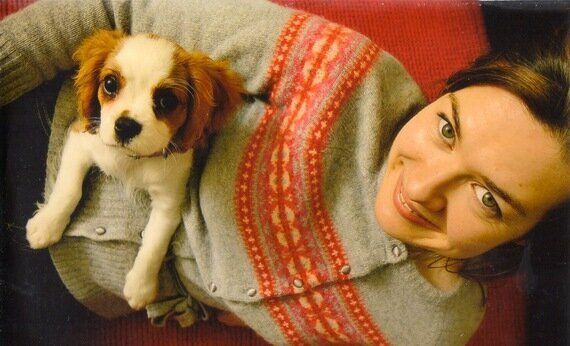Problem dogs, we've all met them. As a child a neighbour's Collie regularly chased me the length of the street, at the time it felt like I was running for my life.
But now I know that the dog wasn't trying to eat me, it was herding me. It was following its natural instinct and doing the job it was bred to do.
My own dog Tilly, a seven-year-old Cavalier King Charles Spaniel, is a normal happy canine most of the time. However, she has a few strange habits like licking table legs and "freezing" around big dogs.
For the past few weeks I've been on a quest to find out why she behaves strangely sometimes. Here's what I've discovered after hours of research, you may recognise some of your own dog's little quirks.
FREEZING: When a big dog approaches Tilly her whole body goes rigid. I used to walk on and think: "She'll catch up when she's ready". But apparently, "freezing" is a sign that a dog feels threatened and stressed.
So, my new approach is to be more assertive with other dogs and their owners. Only yesterday I was walking through woods when a pack of six dogs came bounding towards us.
When Tilly froze I immediately stood in front of her. As the dogs continued to head for us, with no reaction from the two owners, I scooped up Tilly into my arms and turned my back on the dogs.
The owners, who were ambling along, finally picked up the message that my dog and I felt uncomfortable. The women called the dogs back and put them on a lead.
I shouted my thanks and they looked at me oddly. Did I overreact? Maybe. Am I prepared to take a chance with my dog? No.
Frankly, I no longer care about what's considered "polite" behaviour with other dog walkers and as I put Tilly back on the ground she gently nuzzled my hand. I swear if she could talk she'd have said, "Thank you."

LICKING WOOD: Another behavioural trait of my dog that used to confuse me is licking the legs of a table in my bedroom. The first time the strange sound woke me I had no idea what it was and jumped out of bed thinking there was a leak.
Seconds later, Madam trotted down the stairs and I followed, let her out and gave her breakfast. This sequence of events happened several times until I realised what was happening. And here's the clue, if your dog does something weird think about your reaction AFTER they do it. What are they trying to make you do? Give them attention? Let them out? Entice you to play?
I realised that as soon as she licked the wood I was leaping out of bed, then we went downstairs and Tilly was given her breakfast. Clever dog.
BORED WITH HER TOYS: Like any pampered pooch, Tilly has her own toys. She self-selects these from a basket in the hall and demands "vigorous play" or VP. Basically, VP involves her killing the toy by shaking it, or playing fetch or tug (complete with growling). But alas, some of her toys have lost their sparkle. Why?
Aside from breeds, I've discovered that dogs can be split into categories of learning - how they process information using their senses. There are visual dogs, auditory (hearing), olfactory (smell), kinaesthetic (feeling) and Gustatory (taste) dogs.
Find out how your dog processes information, what's it best developed sense? If it's a Lurcher then it will have a well-developed visual sense, whilst Spaniels can be olfactory (think of sniffer dogs) and gundogs are kinaesthetic.
Often dogs can have a mixture of senses. It's important to choose toys and games that develop these senses. It's obvious from testing out her toys that Tilly is auditory, squeaky toys coming out top, and then kinaesthetic, she likes retrieving.
JUMPING ON THE SOFA: When she's finished playing Tilly likes to jump up on the sofa for a cuddle. I don't see this as a behavioural problem, in fact it's actively encouraged in our house. Tilly, after all, is a companion dog and so being affectionate is in her nature, which brings me to my last point.

BREED TRAITS: If you're thinking about sharing your life with a puppy or a rescue dog, especially if you're a first time dog owner, please do you research about the different breeds and their behavioural characteristics.
If you're not an affectionate person don't get a companion dog, and if you like to take it easy don't choose a high energy Jack Russell. And don't go for a guard breed like a Rottweiler because they will, I guarantee, end up being the boss.
NEXT BLOG: The Best Holiday Reads For Dog Lovers: get the low down on dog lit!